Mild Traumatic Brain Injury (MTBI) Or Concussion And Sports
Mild traumatic brain injuries (mTBIs), often referred to as concussions, can occur due to a bump, blow, or jolt to the head. They can also happen if an athlete experiences a hit to the body that causes their head to quickly move back and forth.
For those who experience an mTBI, the brain can bounce around or twist in the skull. In addition, they can experience chemical changes in the brain, and their brain cells can stretch and be damaged.
An mTBI can affect how a person thinks, learns, feels, acts, and sleeps. It can also impact an individual’s ability to learn, concentrate, remember things, and solve problems.
People can sustain a concussion without realizing it, experiencing a wide range of physical symptoms.
An mTBI or concussion won’t necessarily cause a person to lose consciousness. Research indicates that only about 10% of concussions include loss of consciousness.
Athletes are more prone to mTBIs and concussions than others. Some experts suggest that athletes experience up to 3.8 million mild traumatic brain injuries each year. And the U.S. Centers for Disease Control and Prevention (CDC) notes that 5%–10% of athletes experience a concussion in any given sports season. Only the elderly with their high incidences of falling and drivers involved in auto accidents are as or more likely to experience TBIs.
It can take an athlete longer to recover if a second concussion occurs shortly after their first. In this instance, the athlete is increasingly susceptible to long-term health problems relating to their injuries.
Athletes who believe they may be dealing with a concussion should seek medical treatment immediately. At the first sign of injury, consult with a doctor who will perform neuropsychological and neurocognitive tests to determine whether an athlete has sustained a concussion.
Symptoms
An athlete who is coping with a concussion may display any of the following symptoms:

Appears dazed,
stunned, or confused

Struggles to follow instructions

Moves clumsily

Answers questions
slowly

Loses consciousness

Shows sudden mood, behavior, or personality changes

Can’t recall events that happened before or after their hit or fall
Here are symptoms that athletes can experience if they are dealing with a brain injury:
- Headaches
- Nausea
- Vomiting
- Lack of Balance
- Dizziness
- Double or blurry vision
- Sensitivity to light or noise
- Feeling sluggish
- Difficulty concentrating
- Confusion
If you’re experiencing symptoms of a concussion, notify your coach immediately.
If you are an observer, teammate, or coach who believes an athlete may have sustained a brain injury, tell them promptly so they can get a medical evaluation.
Danger Signs
Warning signs that indicate a severe brain injury from trauma to the head or body include:
- Changes in pupil size or one pupil appearing larger than the other
- Convulsions
- Poor coordination
- Slurred speech
- Inability to recognize people or places
- Loss of consciousness
- Headache that worsens over time
- Vomiting
- Confusion
Athletes who experience any of the aforementioned danger signs of an mTBI or concussion should resist the urge to “tough it out.” This is a serious injury that needs medical attention.
Sports And Head Injury Risks

Football
Concussions are among the most common injuries in football. A football player can sustain many hard hits to the head and body in a practice or game. And the sheer volume of hard hits over the course of a season makes football players exceedingly susceptible to mTBIs.
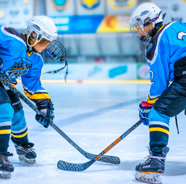
Ice Hockey
Research shows ice hockey concussions occur at all age and skill levels. They also account for up to 14% of all ice hockey injuries. Like football, ice hockey is a physical sport. Hockey players frequently check one another, increasing the risk of mild traumatic brain injuries. There is a risk that a collision between fast-moving players or hard-hit hockey puck can cause a brain injury.

Cycling
If a cyclist crashes or collides at a fast speed, the rider risks a brain injury. Riding a bicycle without a helmet significantly increases the risk of a brain injury. But it is important to note that a helmet won’t necessarily prevent an mTBI or concussion.
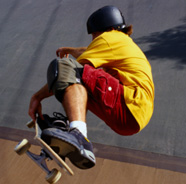
Skate- boarding
A skateboarder can perform spins and flips at high speeds that introduce the risk of falls that can cause the head to strike a hard surface. Even if a skateboarder wears a helmet, a spill or fall can still cause an mTBI.

Skiing and Snowboarding
Head injuries account for 20% of all injuries among skiers and snowboarders every year. In total, 22% of head injuries in skiers and snowboarders are likely to cause loss of consciousness or other concussion symptoms.

Soccer
Soccer may seem like a safe alternative to football and ice hockey. Regardless, soccer players remain susceptible to brain injuries. Research has linked concussions to 22% of soccer injuries. These concussions can occur due to players using their head to direct the ball during games.
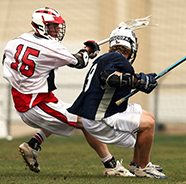
Lacrosse
Lacrosse is a full-contact sport with body- and stick-checking. Players wear shell helmets with full face masks. Yet lacrosse stick and ball impacts cause dozens of concussions annually.
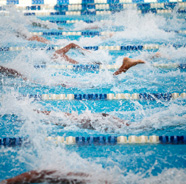
Swimming Pools
A swimmer can crash into another athlete or collide into the side of the pool. In either scenario, a head injury can occur.

Baseball
and Softball
Getting hit by a line drive or foul ball can lead to an mTBI. There is also the risk that a baseball or softball player collides with another player on the basepaths or in the field.
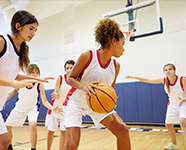
Basketball
Fouls are common in basketball. These can include elbows to the head or other body parts. There are also times when basketball players collide with one another on the court. Basketball players are also susceptible to slips, trips, and falls. In any of these instances, basketball players can suffer head trauma, along with a concussion.
There were 189 concussions reported in the NBA between 1999 and 2018. Following the NBA’s league-wide concussion policy in 2011, an average of 17 concussion incidences per season were recorded among players, an increase over the previous years. These data indicate concussions previously went unreported or undetected among NBA players. But with additional concussion policies, the NBA and other basketball leagues may be able to identify concussions in players more quickly and effectively than ever before.
Treatment And Recovery
There is no one-size-fits-all treatment for concussions. Typically, a doctor will use multiple tests to determine the severity of an athlete’s brain injury. The doctor then provides the patient with a personalized plan for treatment and recovery.
A doctor can use the Glasgow Coma Scale to diagnose a brain injury. With the scale, the doctor checks the patient’s ability to follow directions, move their eyes and limbs, and speak coherently.
Furthermore, a doctor may request a CT or MRI scan.
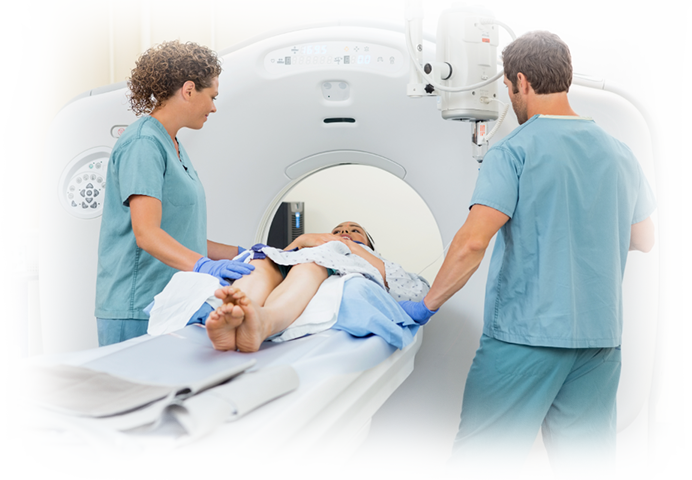
A CT scan provides a doctor with an image of their patient’s brain. It can be used to identify blood clots, tissue damage, or other signs of brain damage.
Comparatively, an MRI is often used if an athlete’s symptoms persist for an extended period after their injury. The scan is more detailed than a CT scan and gives a doctor a close look at a patient’s brain.
It can take one to two weeks for an athlete to recover from a mild traumatic brain injury. Medical professionals typically prescribe rest and over-the-counter pain medications for mild brain injuries. A doctor will monitor a patient’s symptoms in the hours and days after diagnosing a brain injury and may recommend that the patient limit physical activity during this time.
Certain medications may be prescribed to limit damage following a brain injury. In severe instances, surgery may be required to further reduce the risk of long-term brain damage.
Return To Play
An athlete should only return to their sport after receiving a doctor’s approval. The athlete may require myriad tests before returning to play.
The CDC recommends that athletes who have sustained a concussion follow certain steps before returning to play:
Resume your regular activities. Go back to work or school and return to other everyday activities.
Enjoy a light aerobic activity. Spend about 5 to 10 minutes per day walking or performing other light aerobic activities.
Move up to moderate aerobic activity. Try jogging, weightlifting, or other moderate aerobic activities.
Engage in heavy, non-contact activity. Participate in non-contact sports drills and other intense activities.
Practice. Return to practice and engage in full-contact activities.
Compete. Start playing your sport once again.
If any mTBI or concussion symptoms crop up as an athlete engages in any of these steps, notify a doctor.
Long-Term Risks Of Concussions
An mTBI or concussion that goes unaddressed can have long-lasting effects on an athlete’s health. The long-term risks of brain injuries include:
- Early-onset of Alzheimer's disease
- Sleep disturbances
- Memory loss
- Personality changes
- Smell and taste dysfunction
- Chronic traumatic encephalopathy (CTE)
CTE
Those who experience an mTBI are susceptible to chronic traumatic encephalopathy (CTE), which refers to brain degeneration relating to repeated head trauma.
To diagnose chronic traumatic encephalopathy, a doctor studies sections of a patient’s brain. To date, CTE has been found in the brains of many athletes who played football and other contact sports.
Symptoms of CTE can include:
- Aggression
- Depression
- Difficulty thinking and managing emotions
- Impulsive behavior
- Motor neuron disease
- Suicidal ideation
These symptoms may manifest years after a brain injury occurs. They can be mild or severe.
CTE symptoms can escalate quickly and cause serious health problems. They won’t disappear on their own, either. Thus, an athlete who experiences symptoms of CTE should notify their doctor immediately. And if these symptoms become too much to handle, an athlete should always call 911.
Prevention Of TBIs In Sports
There are many things you can do to prevent TBIs in sports, such as:
1. Learn about TBIs and the risks associated with them.
TBIs are problematic but frequently go undiagnosed and untreated. Those who understand the symptoms of TBIs and the risks associated with these injuries can identify these problems and share their knowledge and insights with athletes, coaches, and others.
2. Wear the right safety equipment.
Athletes should wear helmets, face masks, and other equipment to protect the head. They should do so during sports games and practices. Coaches should require that athletes wear properly fitting safety equipment as well. Safety equipment that is damaged or worn out must be replaced.
3. Limit full-contact practices.
Coaches should limit the number of full-contact practices. This reduces the number of times that athletes come into contact with one another or fall to the ground, subsequently reducing the number of times that an athlete is exposed to potential brain injuries.
4. Teach athletes the proper techniques.
Show athletes how to play sports with safety at the top of mind. Athletes can learn the proper techniques to ensure that all participants can play their sport correctly.
5. Err on the side of caution.
Athletes and coaches should remain diligent in their efforts to identify potential TBIs and concussions. Any athlete who experiences symptoms of a brain injury should be taken out of the game or practice, whether voluntarily or by the coach.
The Bottom Line On MTBIs And Concussions In Sports
The risk of a traumatic brain injury or concussion will always exist in most sports, but athletes and coaches who can identify the signs of a brain injury can limit their impact.
According to the Brain Injury Association of America, an athlete who has sustained a concussion must receive follow-up care from a medical professional with concussion training. If symptoms have not subsided within two to three weeks, the patient should be referred to a specialist.